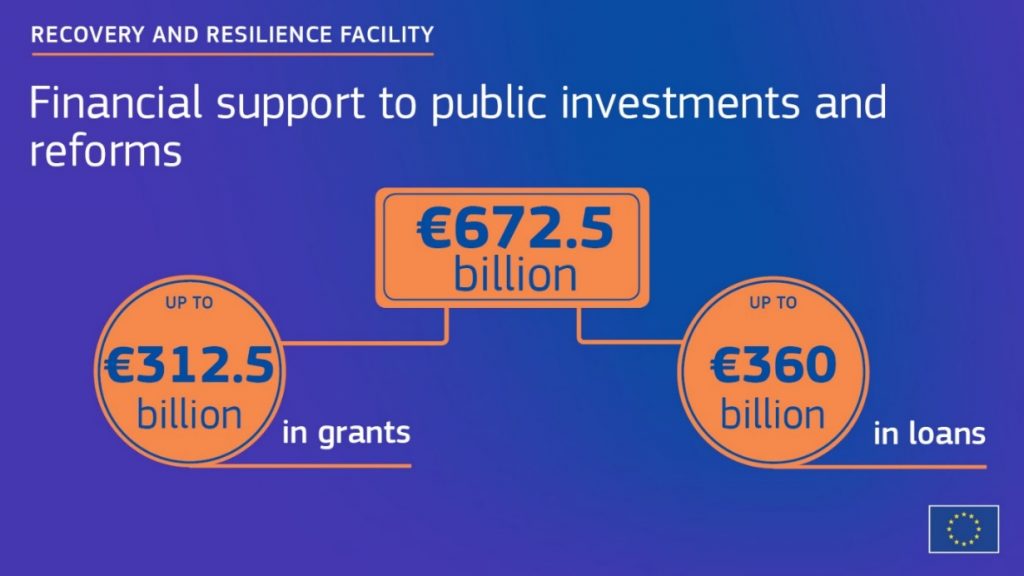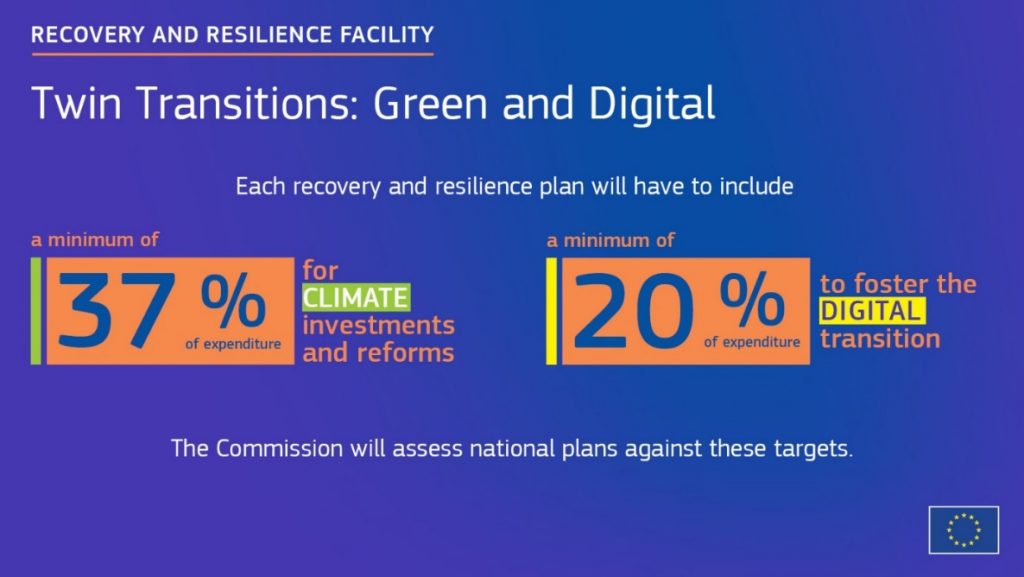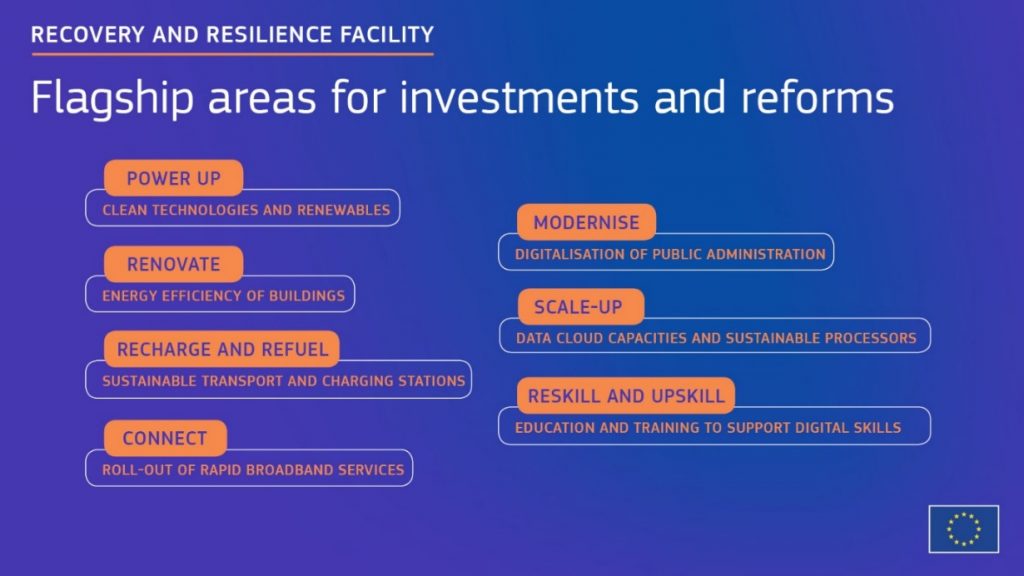Next Generation EU: Making Europe Greener by the Recovery and Resilience Facility

The Recovery and Resilience Facility (the Facility) makes €672.5 billion (in 2018 prices) in loans and grants available to support reforms and investments undertaken by Member States. The aim is to mitigate the economic and social impact of the coronavirus pandemic and make European economies and societies more sustainable, resilient and better prepared for the challenges and opportunities of the green and digital transitions.

By offering large-scale financial support for investment and reforms, the Facility will better prepare Member States for a sustainable recovery.
The RRF entered into force on 19 February 2021. It will finance reforms and investments in Member States until 31 December 2026.
The Facility is the centrepiece of NextGenerationEU, a temporary recovery instrument that allows the Commission to raise funds to help repair the immediate economic and social damage brought about by the coronavirus pandemic. The Facility is also closely aligned with the Commission’s priorities ensuring a sustainable and inclusive recovery that promotes the green and digital transitions.
The Recovery and Resilience Facility offers an unprecedented opportunity to speed up the recovery in Europe and reinforce the commitment to the twin transition: green and digital. The Commission will assess the national plans against the following targets:

The Facility is an opportunity to create European flagship areas for investments and reforms with tangible benefits for the economy and citizens across the EU. These should address issues that need significant investment to create jobs and growth, and which are needed for the green and digital transitions. The Commission has strongly encouraged Member States to put forward investment and reform plans in the following areas:

To benefit from the support of the Facility, Member States have to submit their recovery and resilience plans to the European Commission. Each plan sets out the reforms and investments to be implemented by end of 2026.
Each plan should effectively address challenges identified in the European Semester, particularly the country-specific recommendations of 2019 and 2020 adopted by the Council . It should also advance the green and digital transitions and make Member States’ economies more resilient.
Once submitted, the Commission assesses Member States’ recovery and resilience plans within two months after submission and translates their content into legally binding acts. Based on a proposal by the Commission, the Council has as a rule four weeks to adopt the Commission proposal. The Council’s approval paves the way for the disbursement of a 13% pre-financing.
The first two years of the Mechanism are particularly important, as 70% of the grant funds should be agreed by the end of 2022. The remaining 30% will be negotiable by the end of 2023. indicators and targets should be reported by July 2026, and the last payments are expected to be made by the end of 2026. The milestones and targets envisaged by countries in their plans should be reported by July 2026, and the last payments are expected to be made by the end of 2026.
The plans should address country-specific recommendations for the European Semester for 2020 and 2019, contain elements of reform and lead to economic growth. It is recommended to prioritize investment projects with higher project readiness in view of the time horizons of the Mechanism, to create jobs and strengthen the economic and social sustainability of the Member State and territorial cohesion. The effective contribution to the environmental and digital transition is also a precondition for a positive assessment, with a thematic concentration of at least 37% for green investment and 20% for digitalisation.
The positive assessment of payment claims further depends on the satisfactory implementation of the relevant milestones and targets set in the National Plan.
